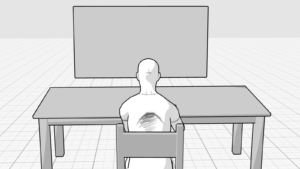In order to reflect and support key concepts such as breath regulation, meditation, and focused attention, I recorded a series of sound samples intended for use as background music. These recordings feature instruments commonly associated with sound healing practices, including improvised performances on singing bowls, handpans, and bells.
These instruments were chosen for their sonorous qualities—specifically, their ability to produce stable frequency ranges and harmonically rich tones. The sustained, resonant sounds they generate are known to induce states of relaxation and mental clarity, making them particularly suitable for meditative environments. By incorporating these textures into the soundscape, the composition creates an auditory space that gently guides the listener toward a calmer physiological state, facilitating deeper engagement with their own breathing cycle.
This approach not only enhances the aesthetic quality of the background music but also serves a functional purpose: it reinforces the psychological and physiological benefits associated with mindful breathing. In this way, sound becomes an active agent in supporting the immersive and introspective experience intended for the listener.





